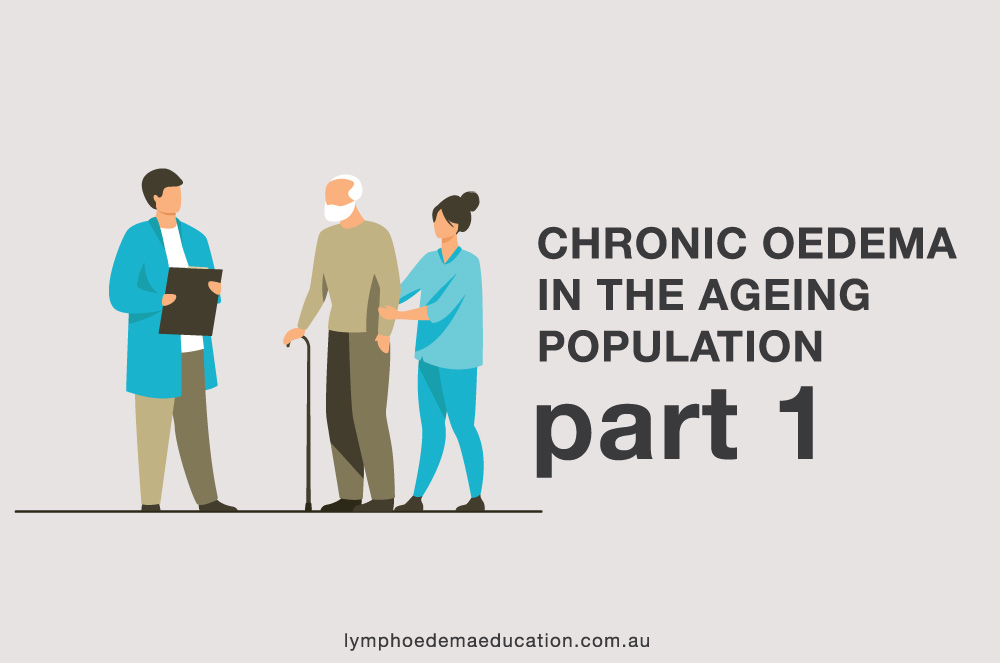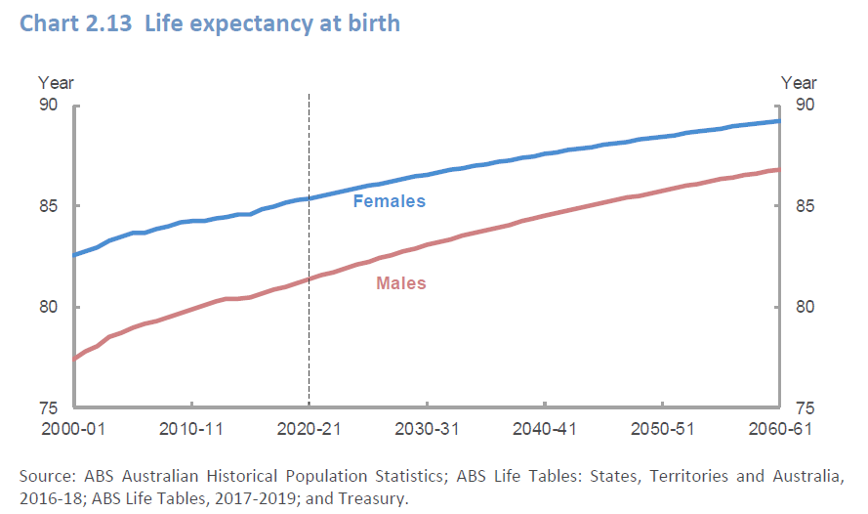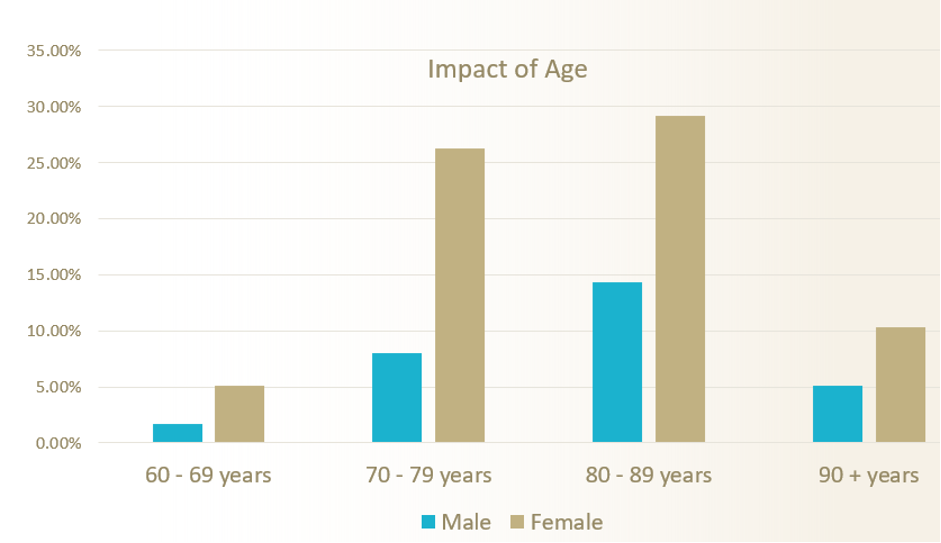Chronic oedema in the ageing population
Part 1 The Hidden Epidemic
Maree O’Connor – Lymphoedema Physiotherapist, Founder Chronic Oedema Solutions

When we think about lymphoedema / chronic oedema we often think of primary lymphoedema and secondary lymphoedema. In our western society, the majority of the awareness campaigns and media attention have been about secondary lymphoedema due to cancer management. There has been a strong voice for early detection and early intervention as we know the earlier this condition is treated the better the outcome. However, there is a population that makes the prevalence of secondary lymphoedema / chronic oedema due to cancer management look like a drop in the ocean.
Chronic oedema in the ageing population
In this article lymphoedema and chronic oedema are considered interchangeable. Chronic oedema is defined by the International Lymphoedema Framework as:
“Chronic oedema is a broad term used to describe oedema which has been present for more than three months and involves one or more of the following areas: limbs, hands/feet, upper body (breast/chest wall, shoulder, back), lower body (buttocks, abdomen), genital (scrotum, penis, vulva), head, neck or face……..Edema arises when capillary filtration exceeds lymphatic drainage….it can be argued that all edema has a lymphatic component, whether it is due primarily to a lymphatic problem or to other factors, which cause an increase in capillary filtration.” (Moffatt, Keeley, & Quere, 2019)
Causes of chronic oedema in the older person
There are many reasons why this population is more likely to have chronic oedema. They broadly fall into two categories:
Increased load on the lymphatic system caused by:
- Chronic venous insufficiency
- Heart failure
- Kidney disease
- Liver disease
- Low protein in the blood
- Certain medications eg BP medication


Reduced lymphatic drainage capacity cause by:
- Cancer
- Surgery
- Radiotherapy
- Infection – cellulitis
- Obesity
- Genetic disorders of lymphatics
- Degeneration of over-loaded lymphatics
- Ageing
An excellent article by A Gonzalez –Loyal, T V Petrova explored the development and ageing of the lymphatic system (Gonzalez & Petrova, 2021). The diagram below clearly shows that as you get older the structure of the lymphatic vessels can deteriorate.


Older people often have a combination of causes for their oedema. Health professionals may be reluctant to treat this oedema by such options as compression, or not look for oedema in fear that they will cause the client to go into heart failure or put more load on other systems such as the kidneys. There lies a major problem if left untreated greater problems can arise such as skin breakdown, cellulitis, decrease in mobility and balance, falls risk, and social isolation due to the decrease in mobility just to name a few. A study by Christine Moffatt et al in 2019 found that out of 2541 subjects chronic oedema and wounds occurred in 73.6% of the cases. The mean age for women with chronic oedema was 78.6 years and for men with chronic oedema was 72.9. In 2021 Burian et al found that cellulitis was more common if there was chronic oedema and managing oedema reduced the risk.
Prevalence of chronic oedema in the ageing population
Population projections for Australia suggest that 25 per cent of the population will be aged 65 and over by 2047 which is almost double the proportion today. 85 years and older is the fastest-growing segment (Treasury Government of Australia, 2021).

Support and care are provided through the residential aged care sector and community-based service providers in the home. The Australian Aged Care Royal Commission indicates a large proportion of this group of individuals age at home.
The largest study looking at the prevalence of chronic oedema is the previously mentioned UK community nursing study with 2541 assessed and 56.7% (1440) were considered to have chronic oedema. In Australia, the LIMPRINT study included the following:
- Site 1 – Three residential care facilities – 54% of participants had swelling (N=37)
- Site 2 – Community-delivered aged care services – 24% of participants had swelling (N= 17)
- Site 3 – Hospital setting (facility-based prevalence study) – 28% of participants had swelling (N=113)
- Site 4 – A wound treatment centre (specific patient population) – 100% of participants had swelling (N=55)
(Gordon, 2019)
This study had small sample sizes and more work needs to be done but it has started the conversation. CatholicCare Sydney identified that chronic oedema was an issue among their clients. Lymphoedema Education Solutions developed a quick and easy screening tool and in 2020 CatholicCare Sydney commenced screening their Home Care Package-funded clients. Care Managers screened both new clients and current clients at their annual review. 461 clients were screened by April 2022 69% were women (315 and 31% (146) were men. Of this 38% (175) were considered to have chronic oedema.
Age was a risk factor in this group with the mean age of chronic oedema in women 80.6 years and men 81.8 years.

Based on this it is estimated that 1.5 million ageing people have chronic oedema. The data also appeared to show that if the person was more mobile they had less oedema.

Current Situation
- Oedema in the older person is not being identified.
- Organisations and staff are unaware that there is a risk that needs to be addressed as they are often not looking for it.
- The current skills and knowledge is inadequate
- Chronic oedema hasn’t been included as an issue in the Australian Aged Care Royal Commission.

Screening is Essential
All elderly people must be screened for chronic oedema. Whether it be in their home or an aged care facility screening should occur. Aged care organisations need to have a commitment to screen and manage chronic oedema which will be part of the clinical care standard they must achieve as part of the Aged Care Quality Standards. General practitioners and their nurses also have an important role as the ageing person often will be seeing them for a variety of causes.
Chronic Oedema Solutions
Chronic Oedema Solutions (COS) was established to assist organisations develop a chronic oedema service plan for their clients. This includes a chronic oedema education framework that considers each part of the workforce. Chronic oedema workforce training is developed specifically for the needs of the organisation.
The first course in the framework is the screening course. To learn more about this course and other courses go to chronicoedema.com
Watch out for Chronic Oedema in the Ageing Population Part 2 Management Considerations
References
Burian , E. A. (2021). Cellulitis in chronic oedema of the lower leg: an international cross-sectional study. British Journal of Dermatology, 110–118.
Gonzalez, L., & Petrova, T. V. (2021). Development and aging of the lymphatic vascular system. Advanced Drug Delivery Reviews, 63–7.
Gordon, S. (2019). LIMPRINT in Australia. Lymphatic Research and Biology, 173–177.
Moffatt, C. (2019). Prevalence and Risk Factors for Chronic Edema in U.K. Community Nursing Services. Lymphatic Research and Biology.
Moffatt, C., Keeley, V., & Quere, I. (2019). The Concept of Chronic Edema – A Neglected Public Health Issue and an International Response: The LIMPRINT Study. Lymphatic Research And Biology, 121-126.
Treasury Government of Australia. (2021). Intergenerational Report.



